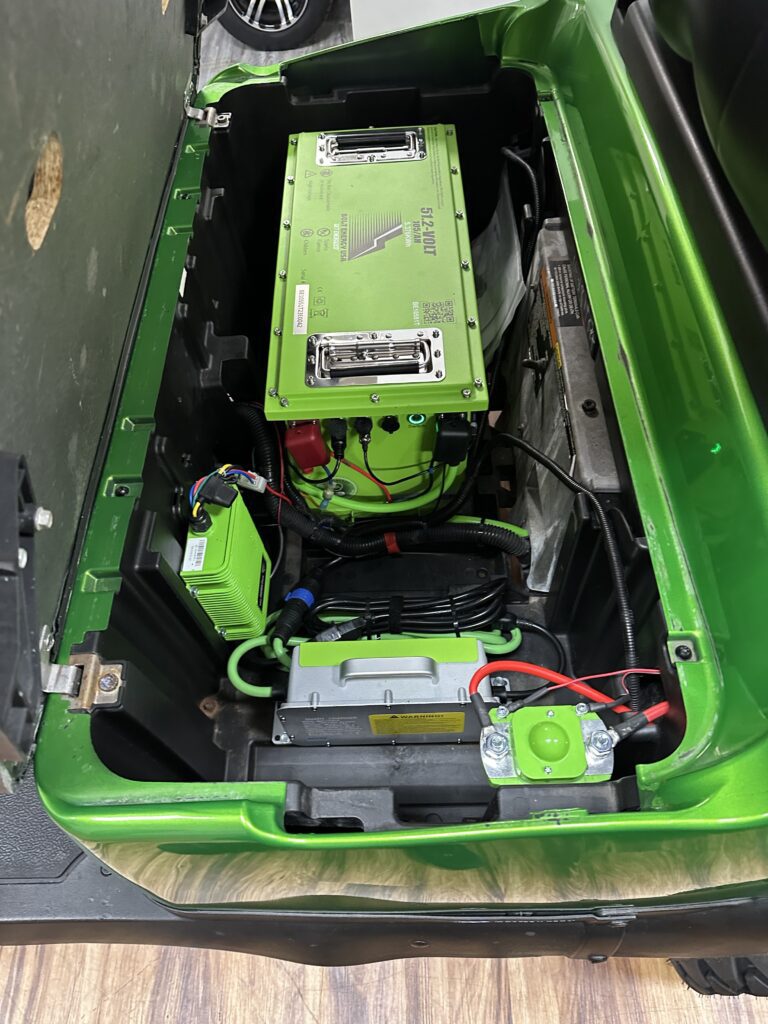Powering Up Fun: Why Lithium Batteries are the Perfect Fit for Golf Carts!
Zooming into the Future with Lithium Power
Golf carts have zoomed into the future, thanks to the magic of lithium batteries! These power-packed wonders offer higher energy density, longer lifespan, and lighter weight compared to traditional lead-acid batteries. What does this mean for you? Faster charging times, improved performance, and greater efficiency on the green and beyond! Plus, with less maintenance and a longer overall lifespan, they’re a cost-effective choice in the long run.
Introducing LiFePO4: The Superstar Battery
Let’s dive into the specifics with LiFePO4, or lithium iron phosphate batteries. Known for their balance between performance, safety, and lifespan, these batteries are gaining popularity across various applications. But what makes them so special?
Key Characteristics of LiFePO4 Batteries:
- Safety First: LiFePO4 batteries are more stable and less prone to overheating, reducing the risk of fire or explosion.
- Long Cycle Life: These batteries can handle more charge and discharge cycles, giving you power that lasts longer.
- Voltage Stability: Enjoy consistent power delivery thanks to their stable voltage platform.
- Slow Self-Discharge: LiFePO4 batteries hold their charge longer when not in use, meaning they’re ready to go when you are.
- Wide Temperature Range: They perform well in both hot and cold conditions.
- Environmental Friendliness: Non-toxic and non-hazardous, they’re a greener choice for our planet.
How to Calculate Golf Cart Battery Capacity
Understanding battery capacity helps you get the most out of your golf cart. Battery capacity is measured in ampere-hours (Ah), indicating how much electric charge a battery can deliver over a specific period. Here’s the simple formula:
Battery Capacity (Ah) = Current (A) × Time (h)
For example, if a battery delivers 10 amperes for 5 hours, its capacity is:
Battery Capacity = 10 A × 5 h = 50 Ah
Remember, factors like discharge rate, temperature, and age can affect the actual usable capacity. High discharge rates may lower the effective capacity, so it’s important to consider these aspects when choosing your battery.
The Sun City Center Trend: The 105Ah Battery Pack
In Sun City Center and nearby areas, we’ve noticed a shift towards the 105Ah battery pack. Why? It’s perfect for future-proofing your cart, allowing for a lifted, 4-passenger setup that can cruise at 22mph while maintaining a decent range. Say goodbye to the high-maintenance woes of flooded lead-acid batteries. The Bolt Energy Lithium Ion battery is our top recommendation, although we also offer ECO Battery and Roy Pow options.
Perfect for Snowbirds: Always Be Charging
For our snowbird friends, lithium batteries solve the long-standing issue of battery maintenance. With a simple charging routine, you can keep your golf cart ready to roll with minimal fuss. Embrace the new mantra: “Always be charging,” and leave the headaches of traditional lead-acid batteries behind.
Whether you’re zipping around the golf course or cruising your neighborhood, lithium batteries are the way to go. Enjoy the ride with reliable, efficient, and powerful battery technology!

